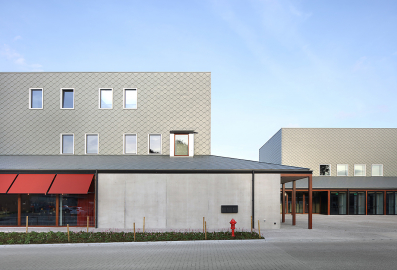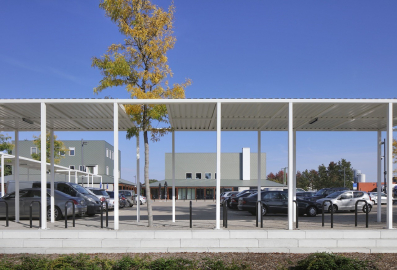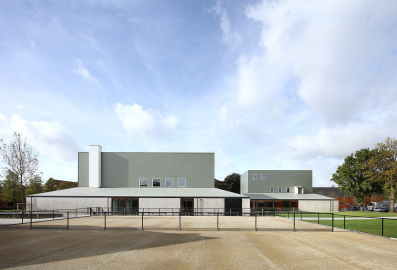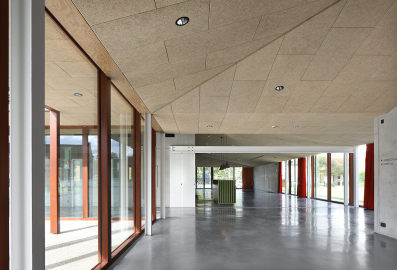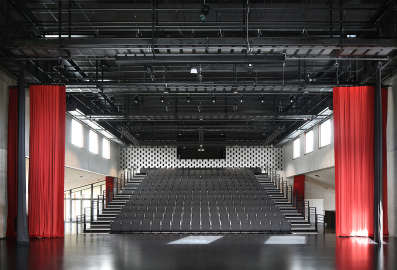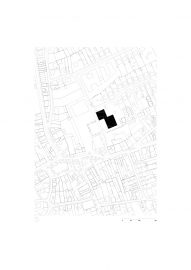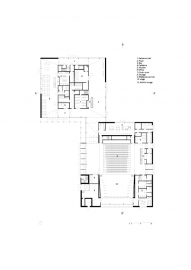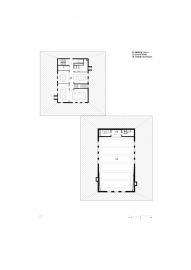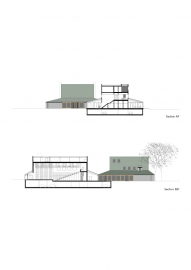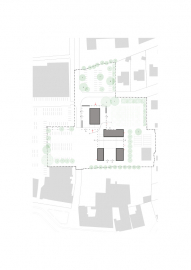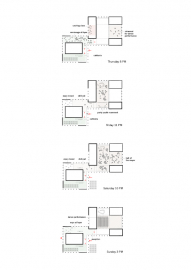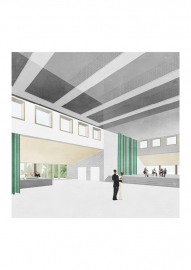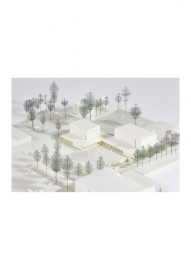Cultural and meeting centre in Kasterlee
‘OC Kasterlee’ is a Cultural and Meeting Centre in the municipality of Kasterlee.
The project includes the design of a masterplan for the market square and the new Cultural Centre and event square.
The implantation of the new community center and event square behind the town hall provides a place that complements the market square. This additional urban space is settled between the current supermarket and an elderly nursing home. With its specific height and presence, the new community center claims its own place between the other monumental buildings, such as the church and the town hall, which determines the image of the municipality. In a low and transparent threshold, a gesture is made towards the small scale of its immediate surroundings. A monument that mediates between the scale of the visitor, that of the site and that of the municipality. The building appears approachable for everyone. The juxtaposition of two volumes reinforces that idea, creating their own squares in the inner corners of the building that covers various public activities.
On the ground level, the public spaces outside are continued inside. The community center is divided into public space and serving cores. The public zones are conceived as one continuous room and have a strong connection towards the ground level. One volume comprises the cafeteria and a part of the foyer, arranged around a central serving block. In the second volume the serving functions have been placed around the multipurpose room which, with its height and technical floor, has a similar roof shape in volume. The T-shape of the multipurpose hall creates several subzones allowing a great variety of functions. As illustrated on the diagrams, this creates an operational flexibility which allows different events taking place at the same time or consecutively.
The relationship of the building towards its environment is enforced by its permeability and transparency. The ground level is extended throughout the building without any barriers, while the gallery, delineated by a wooden loggia, reinforces the visual continuity of the public space and the meeting center. By using the space as maximum and flexible as possible, the community center is realized on a limited footprint. The complete plinth is thus transparent, low and maximally permeable and forms the connection between the area of the village center and the zone to the residential area. The roof, finished in green zinc slates, has a more monumental character and claims its place as a public building in the morphology of the village center.

